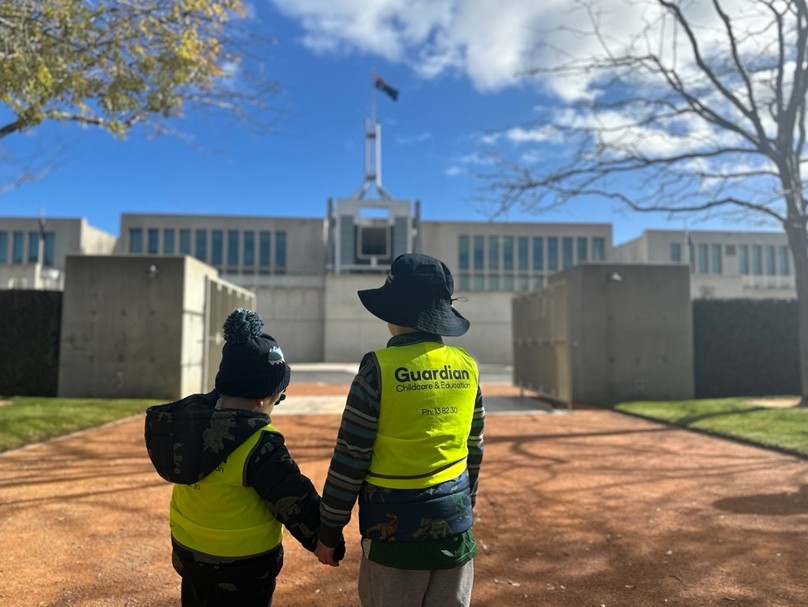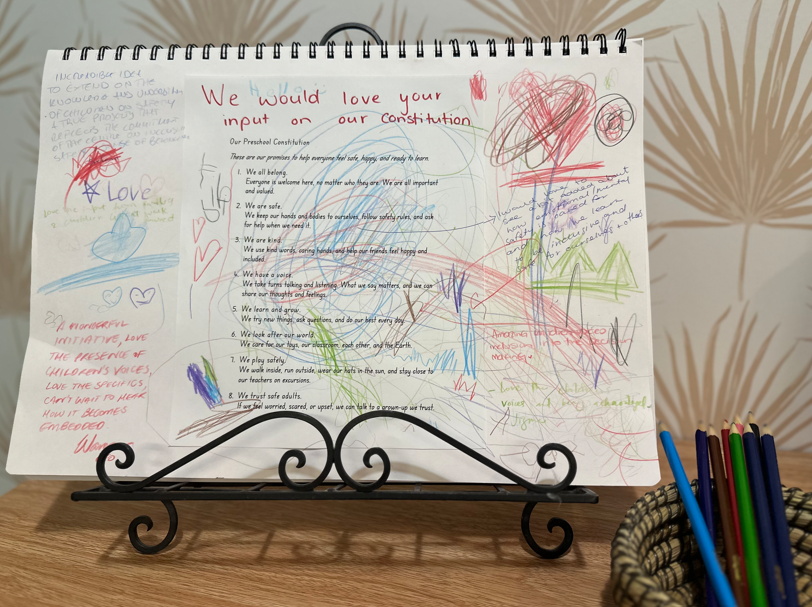
It could be said that a key pillar of a healthy democracy is a citizenry who, from an early age, were educated about their rights, responsibilities, and the institutions that shape their society.
Indeed, the role schools play here is obvious. When educators teach Civics and Citizenship in the early years, they are equipping young people with the means to contribute meaningfully to civic life and strengthen the democratic values that underpin their country.
Unfortunately, student outcomes in this critical area have been declining massively in recent years. In 2024, just 28% of Year 10 students and 43% of Year 6 students met the proficiency standard – the lowest ever.
However, just blocks from Parliament House, a group of Canberra preschoolers is reimagining what it means to participate in democracy and proving that you’re never too young to lead.
At Guardian Forrest, an early learning centre for 3-5 year-olds in Forrest ACT, inclusion is more than a philosophy – it’s a daily practice. Every child, family and staff member is valued for their individuality, fostering a culture where voices are heard and, importantly, creativity thrives.
This commitment inspired the centre’s Democracy Project Team, led by assistant centre manager and lead educator Gemma Krawczyk, trainee educator Bella Healey, and teacher Muskan Muskan.
From little things, big things grow
What began with a simple question “What does the Prime Minister do?” quickly evolved into a deep, child-led exploration of democratic values that now sees children electing Safety Ministers, drafting their own constitution, designing a community flag, and visiting Parliament House weekly to explore the meaning of leadership, fairness, and civic responsibility – all through their own eyes.
“We began looking into our local community and exploring the local area in our Out and About walks,” Lauren Cotterill, Care Manager at Guardian Forrest, told The Educator.
“Our proximity to Parliament House meant that we could explore the grounds and learn from the nature, art and area surrounding Parliament House.”
While the team began visiting in late 2024, the Democracy Project really kicked off following the election being announced and caretaker mode starting in late March 2025.
“Many of our children have families who work in the APS (Australian Public Service) and in Parliament House itself, so it became a conversation that they were hearing at home and bringing into care with them,” Cotterill said.
“From this interest, we started to explore this alongside children, following the line of inquiry about who was pictured on the corflute signs on the sides of the road, who would be our next Prime Minister and what the election was.”

‘We believe in the power of children’s voices’
Cotterill said the Democracy Project has “blossomed into a way of being” within Guardian Forrest’s preschool space.
“We have elected Ministers for Safety who are elected by, and voted in by, their peers, and there is always lots of excitement around who is going to be the next minister,” she said.
“Our children continue to explore their own rights and how adults can support them to be safe and heard.”
As part of this project, the children have researched constitutions and created one together with consultation from the community, Cotterill said.
“We believe in the power of children’s voices and actively engage them in decisions and processes across the centre which is ultimately their space,” she said.
“This can look like children completing a safety review of a space such as a cot room which we then use in creating our risk assessments and ensuring that what we include within also includes the point of view of through the eyes of the child.”
Cotterill said the weekly walks to the Parliament House grounds and the centre’s focus on what discussions and experiences children do while walking there are heavily influenced by the children’s learnings about democracy.
“A huge deep dive into flags and symbology has led to children looking for flags on our walks and creating their own flag for the room, as well as exploring and creating depictions of the Aboriginal, Torres Strait Islander and Australian flags,” she said.
“There has also been a large focus on creative expression throughout the project with children utilising various modes of creation including blocks, clay, sketching, painting amongst many others to depict Parliament House and significant architecture with cultural significance.”
Extending on this, Guadian Forrest is currently hosting one of the National Gallery of Australia’s travelling art cases.
“We are exploring significant Australian artists as well as looking at prominent historical figures and prime ministers past and present.”
Small voices, big steps
When asked if there are any plans to adapt or expand this program, Cotterill said the project is ever evolving and follows the children’s lines of enquiry.
“At current, children are learning about significant Australian historical figures and their impacts on Australian democracy and culture,” she said. “We have plans to visit the Museum Of Australian Democracy to support the children’s learning both about architectural importance and about parliamentary processes.”
The Democracy Project Team is also planning a visit to the inside of Parliament House to see how parliamentary processes happen, Cotterill added.
“We continue to learn about children’s rights and our Preschoolers are currently creating resources to share the knowledge they have acquired with their younger peers,” she said.
“Our Preschool team are also working with our children to write letters to the Education and Early Education Ministers to invite them into Guardian Forrest and learn from them about their role in our Country and immediate community.”

